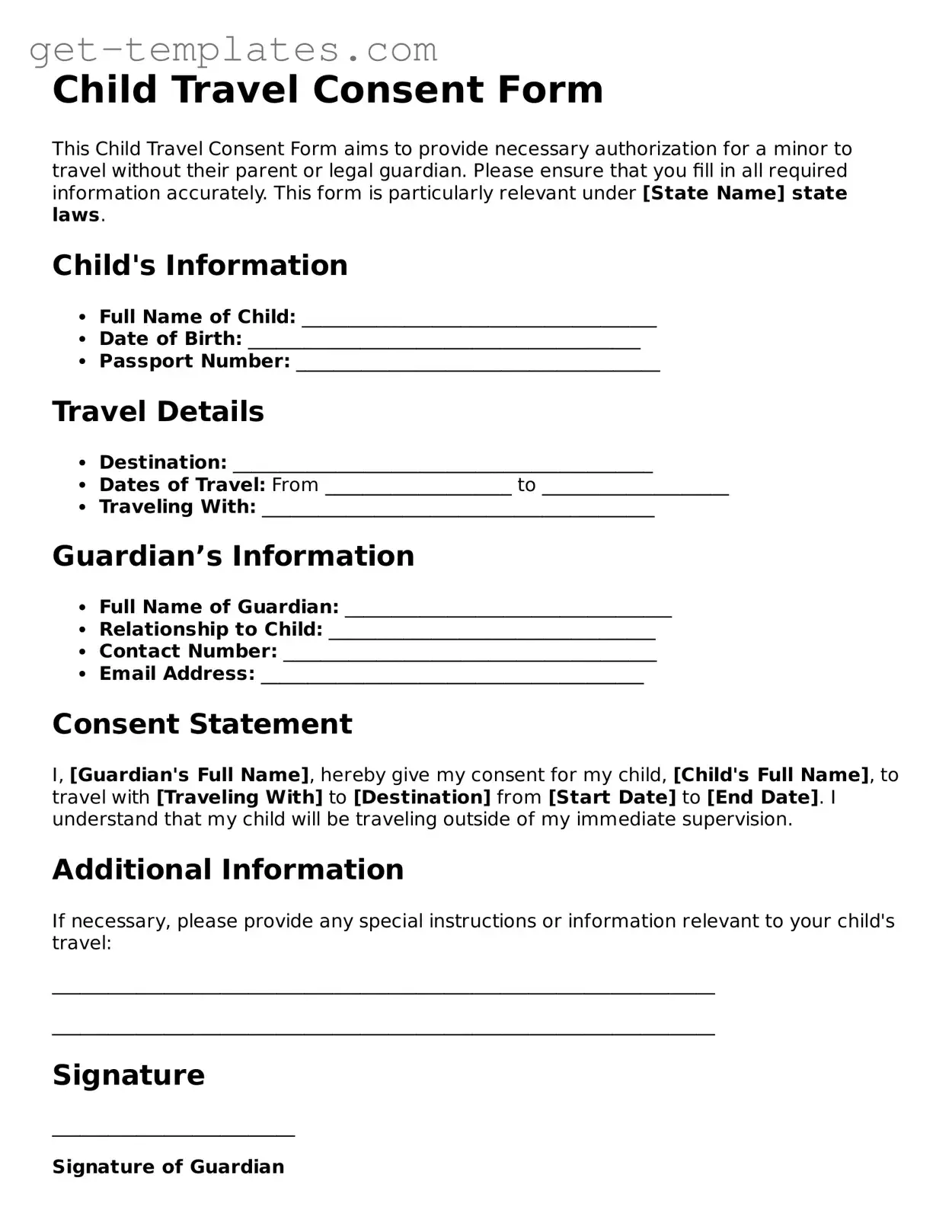Child Travel Consent Form
This Child Travel Consent Form aims to provide necessary authorization for a minor to travel without their parent or legal guardian. Please ensure that you fill in all required information accurately. This form is particularly relevant under [State Name] state laws.
Child's Information
- Full Name of Child: ______________________________________
- Date of Birth: __________________________________________
- Passport Number: _______________________________________
Travel Details
- Destination: _____________________________________________
- Dates of Travel: From ____________________ to ____________________
- Traveling With: __________________________________________
Guardian’s Information
- Full Name of Guardian: ___________________________________
- Relationship to Child: ___________________________________
- Contact Number: ________________________________________
- Email Address: _________________________________________
Consent Statement
I, [Guardian's Full Name], hereby give my consent for my child, [Child's Full Name], to travel with [Traveling With] to [Destination] from [Start Date] to [End Date]. I understand that my child will be traveling outside of my immediate supervision.
Additional Information
If necessary, please provide any special instructions or information relevant to your child's travel:
_______________________________________________________________________
_______________________________________________________________________
Signature
__________________________
Signature of Guardian
Date: ___________________
Please make sure to carry this document with your child during their travels. It may be required by authorities for verification purposes.
